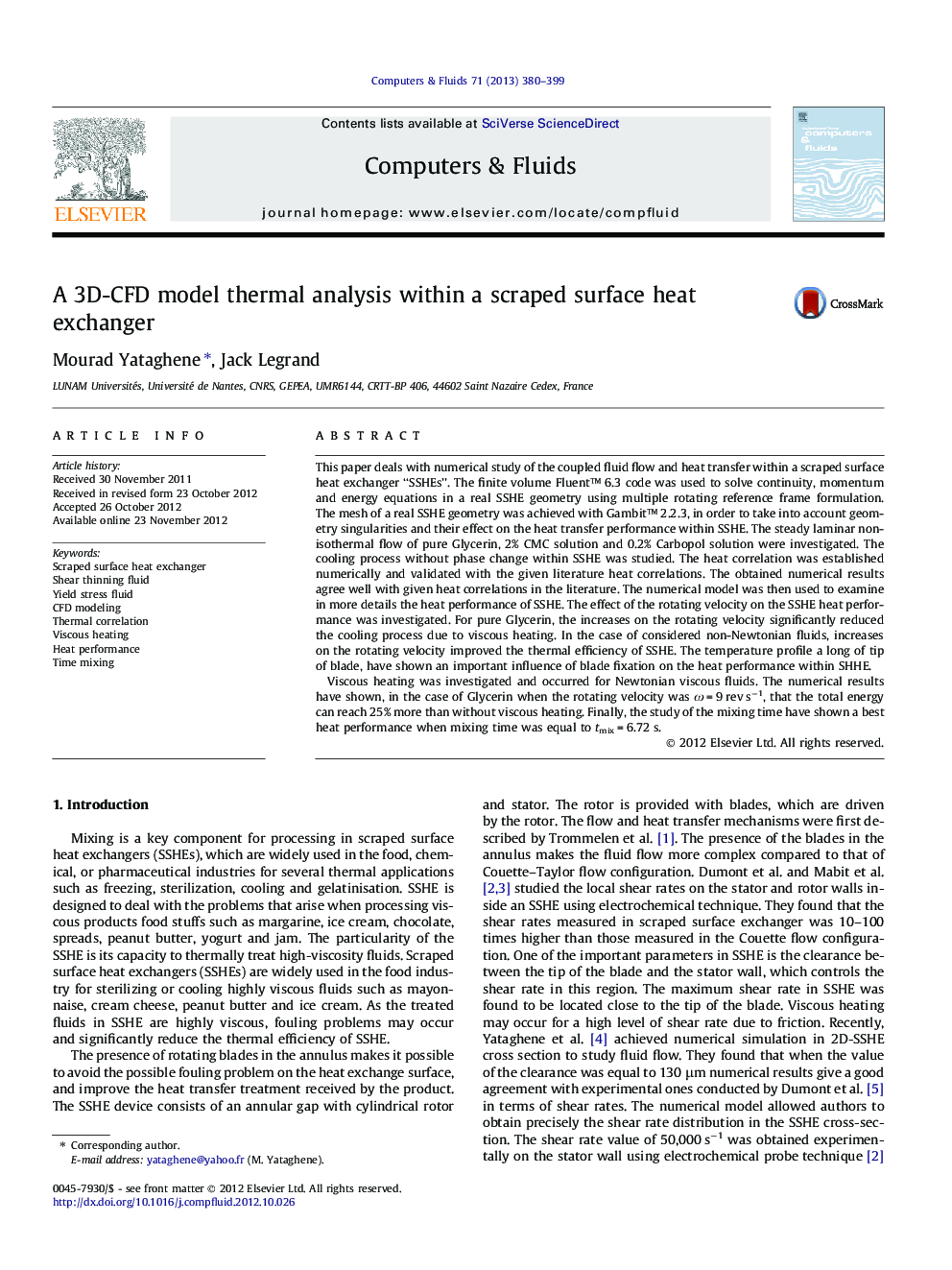| کد مقاله | کد نشریه | سال انتشار | مقاله انگلیسی | نسخه تمام متن |
|---|---|---|---|---|
| 756722 | 1462739 | 2013 | 20 صفحه PDF | دانلود رایگان |

This paper deals with numerical study of the coupled fluid flow and heat transfer within a scraped surface heat exchanger “SSHEs”. The finite volume Fluent™ 6.3 code was used to solve continuity, momentum and energy equations in a real SSHE geometry using multiple rotating reference frame formulation. The mesh of a real SSHE geometry was achieved with Gambit™ 2.2.3, in order to take into account geometry singularities and their effect on the heat transfer performance within SSHE. The steady laminar non-isothermal flow of pure Glycerin, 2% CMC solution and 0.2% Carbopol solution were investigated. The cooling process without phase change within SSHE was studied. The heat correlation was established numerically and validated with the given literature heat correlations. The obtained numerical results agree well with given heat correlations in the literature. The numerical model was then used to examine in more details the heat performance of SSHE. The effect of the rotating velocity on the SSHE heat performance was investigated. For pure Glycerin, the increases on the rotating velocity significantly reduced the cooling process due to viscous heating. In the case of considered non-Newtonian fluids, increases on the rotating velocity improved the thermal efficiency of SSHE. The temperature profile a long of tip of blade, have shown an important influence of blade fixation on the heat performance within SHHE.Viscous heating was investigated and occurred for Newtonian viscous fluids. The numerical results have shown, in the case of Glycerin when the rotating velocity was ω = 9 rev s−1, that the total energy can reach 25% more than without viscous heating. Finally, the study of the mixing time have shown a best heat performance when mixing time was equal to tmix = 6.72 s.
► A 3D numerical model was achieved in order to study SSHE flow and thermal behavior.
► The analysis was based on the thermal study of an SSHE.
► Three rheological fluids behaviors were tested.
► Thermal behavior of an SSHE was examined in real geometry.
► The mixing time was optimized to reach desired product texture.
Journal: Computers & Fluids - Volume 71, 30 January 2013, Pages 380–399